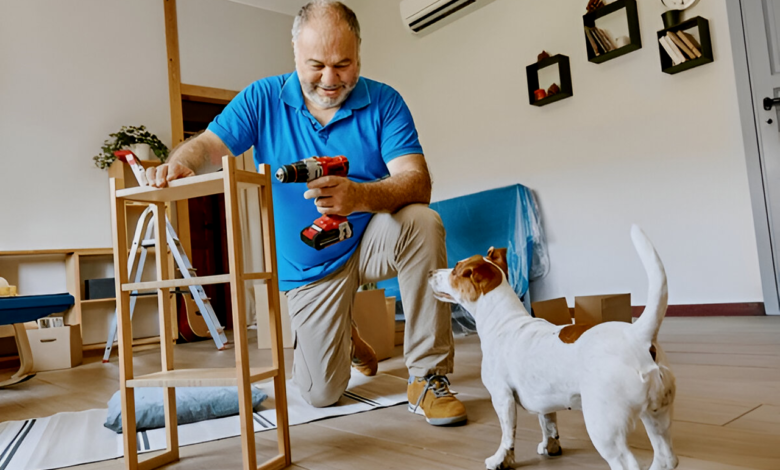
How to stop your pet from destroying furniture is a common concern for pet owners who find their beloved couches, chairs, and tables falling victim to claws, teeth, and paws. Whether you have a playful puppy, a curious kitten, or even a mischievous rabbit, destructive behavior can be frustrating and costly. However, it’s important to remember that pets don’t act out of spite—they often engage in these behaviors due to instinct, boredom, anxiety, or unmet needs. Understanding the root causes of their actions is the first step toward finding effective solutions. By addressing these underlying issues, you can create a harmonious environment where both your furniture and your furry friend can coexist peacefully.
The journey to protecting your furniture begins with empathy and patience. Pets, much like humans, require mental stimulation, physical exercise, and emotional security to thrive. When these needs aren’t met, they may turn to destructive habits as a way to cope or entertain themselves. This guide will explore practical strategies to redirect your pet’s energy, provide enriching alternatives, and reinforce positive behaviors. From training techniques to environmental adjustments, you’ll discover how to transform your home into a space where your pet feels fulfilled and your furniture remains intact. With consistency and understanding, you can stop your pet from destroying furniture and build a stronger, happier bond with your companion.
Understanding the Root Causes
Before implementing solutions, it’s critical to identify why your pet is targeting furniture. For dogs, chewing is a natural behavior, especially in puppies teething or adult dogs alleviating stress. Destructive scratching in cats, meanwhile, serves multiple purposes: it keeps claws healthy, marks territory, and stretches muscles. Small pets like rabbits may gnaw on wood to manage ever-growing teeth. Boredom is another universal trigger—pets left alone for long hours without stimulation often turn to furniture as a makeshift toy. Anxiety, particularly separation anxiety in dogs, amplifies these behaviors. A dog with separation anxiety might shred cushions to cope with stress, while a cat in a multi-pet household might scratch furniture to assert dominance. Health issues, such as dental pain or nutritional deficiencies, can also drive destructive habits. Consulting a veterinarian can rule out medical causes and inform your approach.
Training Techniques for Positive Behavior
Training is the cornerstone of addressing furniture destruction. For dogs, redirect chewing to appropriate items like rubber toys or dental sticks. When you catch your dog gnawing on a chair leg, calmly interrupt the behavior and offer a replacement. Praise them enthusiastically when they switch focus. Commands like “leave it” or “drop it” are invaluable; practice these during calm moments to ensure compliance in high-stakes scenarios. For cats, scratching posts are essential, but placement matters. Position posts near their favorite furniture targets and reward them with treats or catnip when used. Clicker training can reinforce these habits—click and treat the moment your cat uses the post. Avoid punishment, as it breeds fear. Instead, use positive reinforcement to build trust. Consistency is key: every family member must enforce the same rules to prevent confusion.
Environmental Enrichment: Boredom-Busting Solutions
A stimulated pet is a well-behaved pet. Dogs thrive on physical and mental exercise—daily walks, puzzle toys, and obedience training sessions reduce pent-up energy. Rotate toys weekly to maintain novelty; a bored dog will rediscover an old toy with fresh excitement. For cats, vertical spaces like cat trees satisfy climbing instincts, while window perches provide entertainment. Interactive toys, such as feather wands or motorized mice, mimic prey and channel hunting energy. Small pets benefit from tunnels, chew blocks, and foraging opportunities. Scatter feeding, where kibble is hidden around the house, turns mealtime into a mentally engaging game. For all pets, consider companionship: a second pet (if feasible) can alleviate loneliness. However, introductions must be gradual to prevent stress.
Deterrents and Protective Measures
While training and enrichment address underlying causes, deterrents protect furniture during the transition. Bitter apple sprays or citrus-based solutions make wood and fabric unappealing to chewers. For cats, double-sided tape or aluminum foil draped over couch arms discourages scratching—most cats dislike the texture. Clear vinyl carpet runners, placed upside-down with nubby surfaces, work well on upholstery. For persistent pets, motion-activated devices like compressed air deterrents startle them without harm. Physical barriers like baby gates or closed doors restrict access to vulnerable areas. Meanwhile, invest in durable, pet-friendly furniture: microfiber upholstery resists claws, and leather, while pricey, is easier to repair than fabric. Slipcovers offer a washable layer of protection.
Addressing Anxiety and Stress
Anxiety-driven destruction requires a tailored approach. Dogs with separation anxiety benefit from gradual desensitization: practice leaving for short intervals and reward calm behavior. Soothing aids like pheromone diffusers (Adaptil for dogs, Feliway for cats) or calming collars reduce stress. For severe cases, consult a veterinarian about anti-anxiety medications or supplements. Cats, sensitive to environmental changes, may act out after moves or new pets. Create safe zones with hiding spots like cardboard boxes or elevated shelves. White noise machines mask stressful sounds, while routine feeding and playtimes provide stability. Never underestimate the power of attention—15 minutes of focused play or grooming daily can alleviate anxiety in pets craving connection.
Consistency and Patience: The Long Game
Changing behavior takes time. Pets don’t grasp “right” and “wrong” as humans do; they learn through repetition and association. If your dog relapses and chews a table leg, revisit training instead of scolding. Celebrate small victories—a week without incidents deserves a reward (for both of you!). Involve everyone in the household; mixed messages undo progress. Document patterns in a journal: note when destruction occurs, what preceded it, and how you responded. This reveals triggers and tracks improvement. Remember, setbacks are normal. Aging, health changes, or environmental shifts (like a new baby) can reignite old habits. Stay adaptable, and prioritize your pet’s emotional well-being over perfection.
Read More: When to Take Your Pet to the Vet: Warning Signs to Watch
Conclusion
How to stop your pet from destroying furniture isn’t about quick fixes but fostering a lifestyle that meets your pet’s physical and emotional needs. By combining training, environmental adjustments, and empathy, you’ll transform destructive habits into positive outlets. Protecting your furniture becomes secondary to nurturing a happy, balanced pet. Celebrate progress, lean on professional resources when needed, and remember that patience is your greatest ally.
In the end, the journey strengthens your bond. Your pet learns to trust your guidance, while you gain insight into their unique personality. Challenges like clawed couches or gnawed table legs fade as you build a home where both furniture and furry friends thrive. With consistency and compassion, coexistence isn’t just possible—it’s joyful.
FAQs
How long does it take to stop furniture destruction?
Results vary, but most pets show improvement within 4–6 weeks of consistent training. Anxiety-related behaviors may take months. Stay patient and adjust strategies as needed.
Is punishment effective?
No—punishment increases fear and confusion. Redirect to positive behaviors and reward success.
What toys best deter chewing?
Durable rubber toys (Kong, West Paw) for dogs; sisal scratching posts for cats. Rotate toys to maintain interest.
Can anxiety medication help?
In severe cases, yes. Consult your vet to explore options like Prozac or natural supplements.
Are certain breeds more destructive?
High-energy breeds (e.g., Border Collies, Bengals) need more stimulation but thrive with proper outlets. Breed traits aren’t destiny—training matters most.







